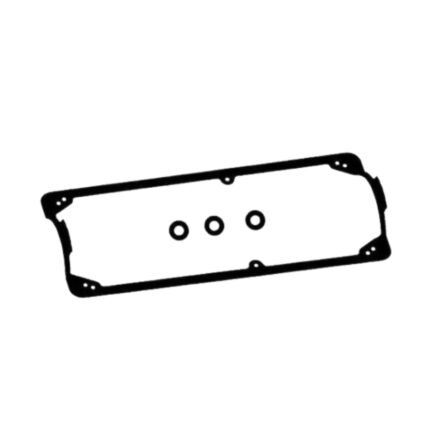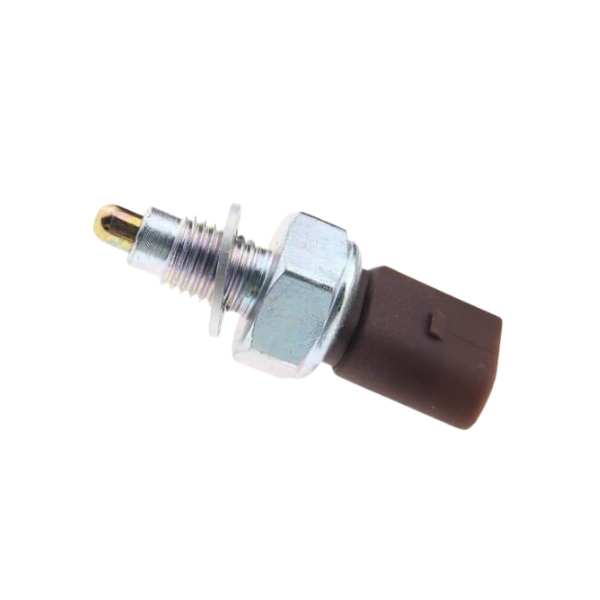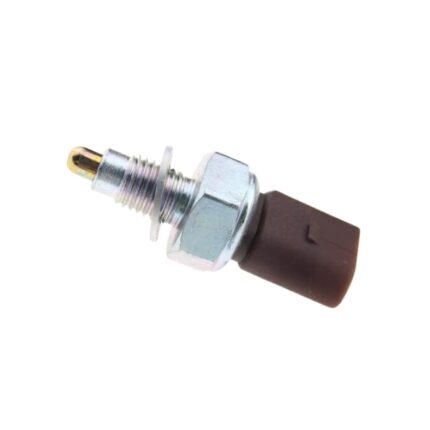Get VW Golf Bora MK4 Reversing Light Switch 02K945415D in Kenya
The reversing light switch, also known as the backup light switch or reverse light switch, is a small yet crucial component in a vehicle’s electrical and lighting system. It plays a pivotal role in ensuring safety by activating the reversing lights whenever the vehicle is put into reverse gear. These lights serve as a signal to other drivers, pedestrians, and anyone around that the vehicle is about to move backward, helping to prevent accidents. Understanding the function, importance, common issues, and replacement process of the reversing light switch is essential for maintaining the safety and reliability of your vehicle.
Function and Importance of the Reversing Light Switch
The reversing light switch is typically mounted on or near the transmission, where it detects when the vehicle is shifted into reverse gear. In a manual transmission vehicle, the switch is often located on the transmission housing, while in an automatic transmission vehicle, it might be integrated into the gear selector mechanism or the transmission control unit.
When the vehicle is shifted into reverse, the reversing light switch closes an electrical circuit, sending power to the reversing lights located at the rear of the vehicle. These lights then illuminate, providing a clear visual cue that the vehicle is about to move backward. This is particularly important when parking, reversing out of driveways, or maneuvering in tight spaces where visibility might be limited.
The reversing lights not only alert other road users but also provide additional illumination, making it easier for the driver to see obstacles, pedestrians, or other vehicles behind them. This added visibility is crucial for preventing collisions and ensuring that the driver can safely navigate in reverse.
Types of Reversing Light Switches
Reversing light switches can vary depending on the type of vehicle and its transmission system. Here are the common types:
- Mechanical Reversing Light Switches: These switches are directly linked to the gear shifter. When the gear shifter is moved into reverse, it mechanically engages the switch, closing the circuit and activating the reversing lights. This type of switch is common in older vehicles with manual transmissions.
- Electronic Reversing Light Switches: In modern vehicles, especially those with automatic transmissions, electronic reversing light switches are more common. These switches are often integrated into the vehicle’s transmission control module (TCM) or gear selector. When the vehicle is put into reverse, the TCM sends a signal to the switch to activate the reversing lights. These switches are generally more reliable and require less physical movement to operate compared to mechanical switches.
Common Issues with Reversing Light Switches
Like any automotive component, reversing light switches can develop issues over time. Some common problems include:
- Switch Failure: Over time, the reversing light switch can wear out due to frequent use or exposure to the elements. A failing switch may result in the reversing lights not activating when the vehicle is put into reverse. This can pose a safety risk, as other road users may not be aware that the vehicle is reversing.
- Corrosion and Dirt: The reversing light switch, particularly in older vehicles, is often exposed to dirt, moisture, and other environmental factors. Corrosion or dirt buildup can interfere with the switch’s ability to make a proper connection, preventing the reversing lights from functioning correctly.
- Wiring Issues: Faulty wiring or loose connections can also cause problems with the reversing light switch. If the wiring leading to the switch or the reversing lights is damaged or disconnected, the lights may not turn on when the vehicle is in reverse.
- Misalignment: In vehicles with mechanical reversing light switches, the switch may become misaligned over time. If the switch is not properly aligned with the gear shifter, it may not engage when the vehicle is put into reverse, preventing the lights from activating.
- Blown Fuse: The reversing light switch is part of the vehicle’s electrical system, and it is protected by a fuse. If the fuse blows, the circuit will be interrupted, and the reversing lights will not function. This issue is often easy to diagnose and fix by simply replacing the blown fuse.
Diagnosing Reversing Light Switch Problems
If your reversing lights are not working, it’s important to diagnose the issue promptly to ensure your vehicle’s safety. Here’s how you can troubleshoot a potential reversing light switch problem:
- Check the Bulbs: Before assuming that the switch is faulty, check the reversing light bulbs to ensure they haven’t burned out. Replacing a burnt-out bulb is a simple and inexpensive fix.
- Inspect the Fuse: Locate the fuse that protects the reversing light circuit and check if it’s blown. If the fuse is blown, replace it with one of the same rating. If the fuse blows again, there may be an underlying electrical issue that needs further investigation.
- Test the Switch: If the bulbs and fuse are in good condition, the next step is to test the reversing light switch. In a manual transmission vehicle, this often involves accessing the switch on the transmission and using a multimeter to check for continuity when the vehicle is in reverse. If the switch does not show continuity when engaged, it is likely faulty and needs to be replaced.
- Inspect Wiring: Check the wiring leading to and from the reversing light switch for any signs of damage, corrosion, or loose connections. Repair or replace any damaged wiring as needed.
Replacing the Reversing Light Switch
Replacing a faulty reversing light switch is generally a straightforward task that can be done by a DIY enthusiast or a professional mechanic. Here’s a general guide on how to replace a reversing light switch:
- Locate the Switch: Depending on your vehicle, the reversing light switch may be located on the transmission housing or near the gear selector. Consult your vehicle’s service manual for the exact location.
- Disconnect the Battery: To prevent any electrical issues or accidents, disconnect the vehicle’s battery before starting the replacement process.
- Access the Switch: If necessary, lift the vehicle and secure it on jack stands to access the reversing light switch. In some vehicles, you may need to remove surrounding components to reach the switch.
- Disconnect the Wiring: Carefully disconnect the electrical connector from the reversing light switch. Take note of the connector’s orientation for reinstallation.
- Remove the Old Switch: Use the appropriate tools to unscrew and remove the faulty reversing light switch.
- Install the New Switch: Screw in the new reversing light switch and tighten it securely. Reconnect the electrical connector to the new switch.
- Test the Switch: Reconnect the battery and start the vehicle. Shift into reverse and check if the reversing lights activate. If they do, the new switch is working correctly.
- Reassemble and Lower the Vehicle: If you had to remove any components to access the switch, reinstall them. Lower the vehicle if it was lifted, and you’re done.
Follow us on Facebook for more parts.




